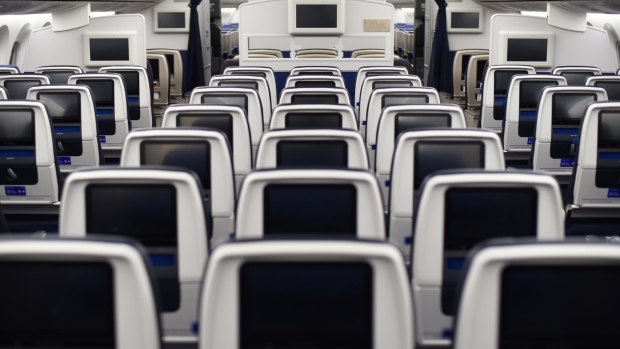This was published 4 years ago
Health travel tips: Where to sit on a plane to avoid coronavirus
By Hugh Morris

Where you sit could affect your chances of contracting coronavirus.Credit: iStock
China has all-but closed its borders in response to the spread of the coronavirus, placing more than a dozen cities on lockdown, halting tourism activities and cutting transport links.
Yet as cases of the disease are confirmed around the world, concerns remain that air travel is the most likely source of future contaminations.
Airlines, including British Airways, have cancelled flights in and out of China, but some services are still departing the country, including some to Europe and the US.
A report two years ago into the "behaviours, movements and transmission of droplet-mediated respiratory diseases during transcontinental airline flights"; it could easily be specific to coronavirus.
The study, led by Emory University, Atlanta, US, and published in the Proceedings of the National Academy of Sciences (PNAS), considered the best seat in an aircraft to reduce the chances of infection.
"Air travel can serve as a conduit for the rapid spread of newly emerging infections," the report reads.
After collecting 229 environmental samples over 10 flights, the study determined that passengers in window seats were at the least risk of exposure to an airborne disease. And that those seated next to an ill person or in adjacent rows at most risk.
"Passengers seated within one row and within two seats laterally of the infected passenger had an 80 percent or greater probability of becoming infected," said the study.
"For all other passengers, the probability of infection was less than three percent."
Considering the movement of passengers during the flight, one of the greatest factors in probability of infection, the survey found that 38 per cent of passengers never left their seats, 38 per cent left once, 13 per cent twice, and 11 per cent more often. Window seat passengers were much less likely to leave their seat and therefore less likely to come into contact with an infected person.
Researchers also warned that infectious crew members could infect an average of 4.6 passengers per flight.
"Thus, it is imperative that flight attendants not fly when they are ill," read the study.
If you're the type of traveller who worries about catching the flu or another dreaded disease from a fellow airline passenger, a new study should put your mind at ease.
The study used a transmission rate of 0.018 per minute of contact, which it said is four times the rate it would normally estimate, but akin to an incident in 1977 in which 38 of 54 passengers and crew became infected with influenza-like illness after waiting in an airplane on an airport tarmac for four and a half hours with no air circulation
In modelling, the study found that those sat in window seats had a probability of infection not above 0.5 per cent, when the source of the illness was sat in an aisle seat, while middle and aisle passengers had up to 0.9 per cent.
It recommended that travellers exercise "careful hand hygiene".
Dr Richard Dawood, Telegraph Travel's travel health expert, has said in the past the "virtually moisture-free" conditions inside a plane cabin increase your vulnerability to airborne infection. You are more susceptible to colds and respiratory infection, and viruses which are known to thrive in conditions of low-humidity.
"Coughing passengers can spread infection to those immediately around them, and in a small number of cases of more severe illnesses - such as TB [tuberculosis] - are known to have spread in this way," said Dr Dawood.
The total volume of air on a plane is said to be refreshed every two to three minutes, which – according to the Civil Aviation Authority – is more frequent than in most air-conditioned buildings, where the air is changed every five to ten minutes.
The Telegraph, London
See also: The surprising person you are most likely to get sick from on a plane
See also: The disgusting and ignorant behaviour of sick airline passengers
Sign up for the Traveller newsletter
The latest travel news, tips and inspiration delivered to your inbox. Sign up now.